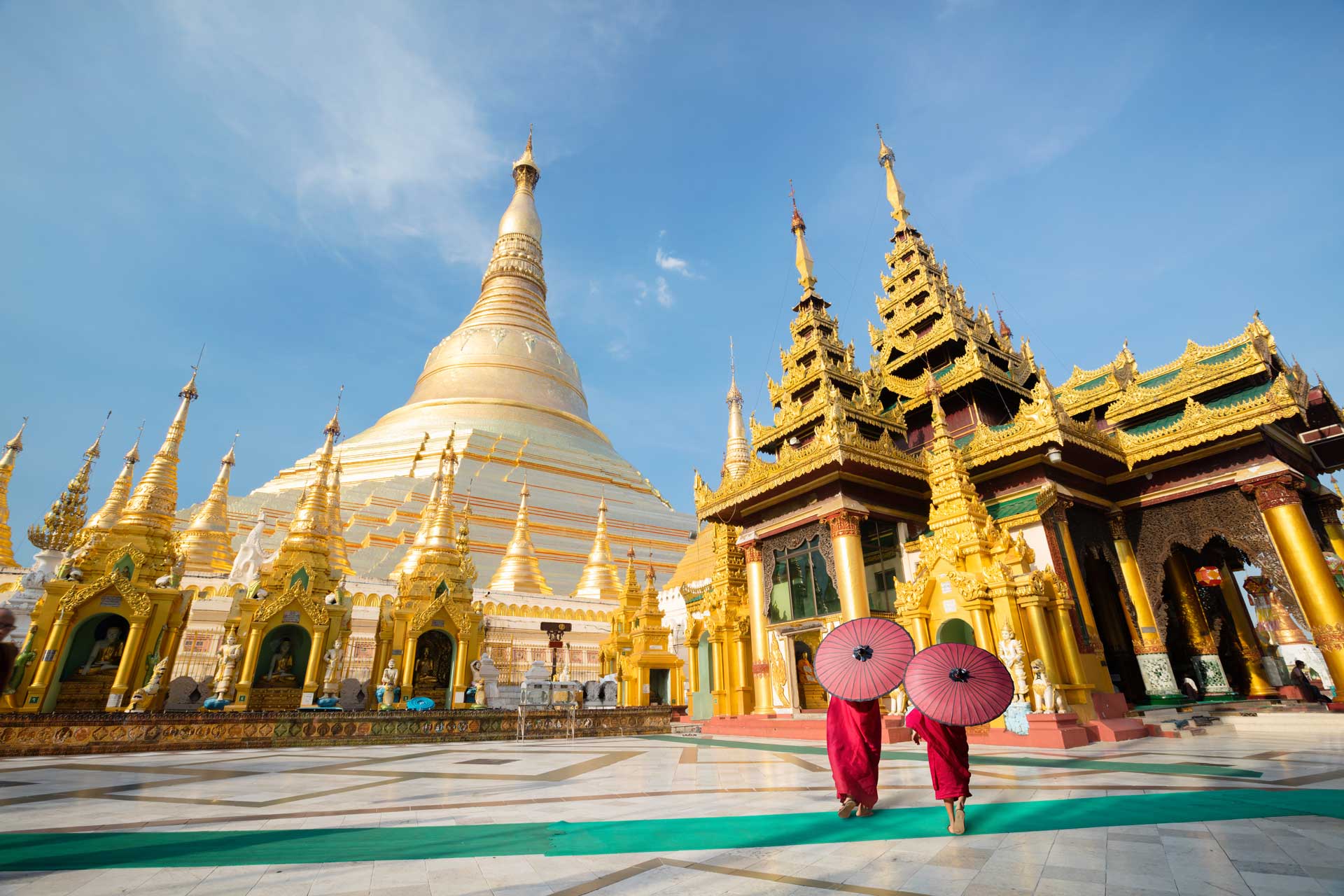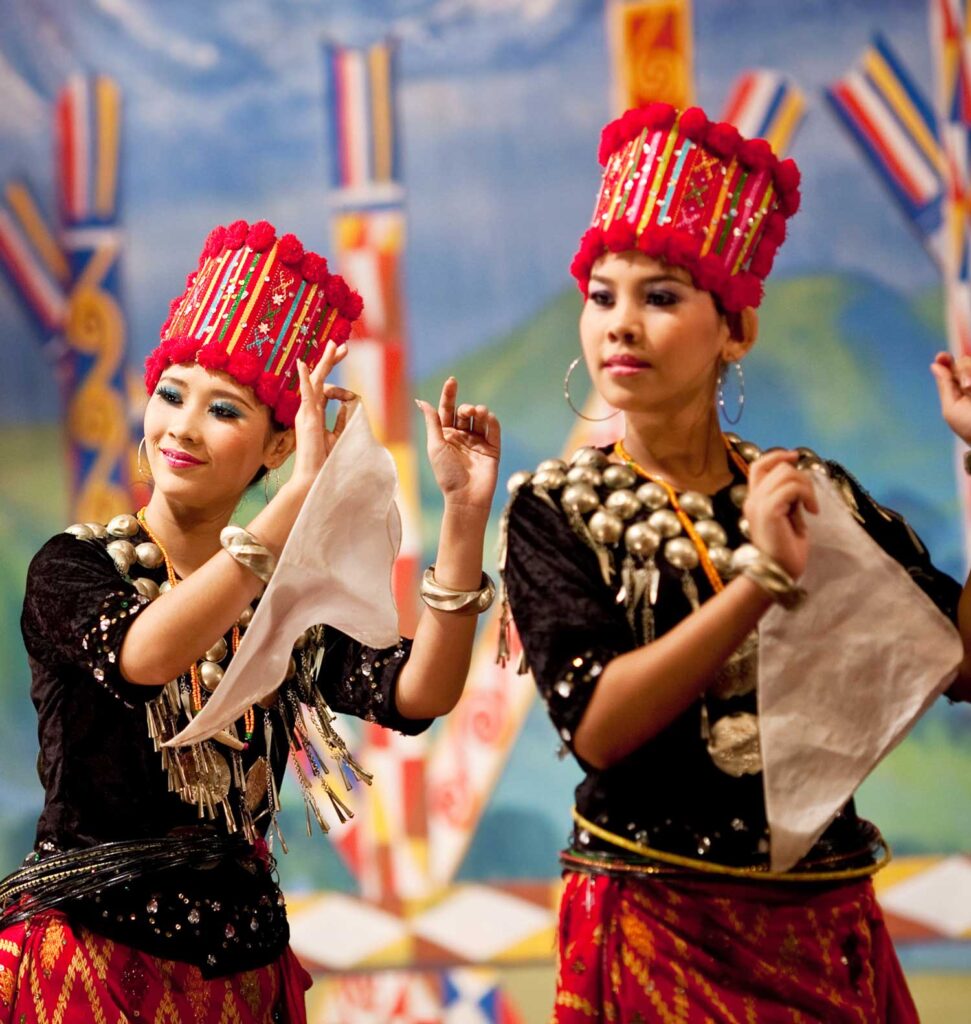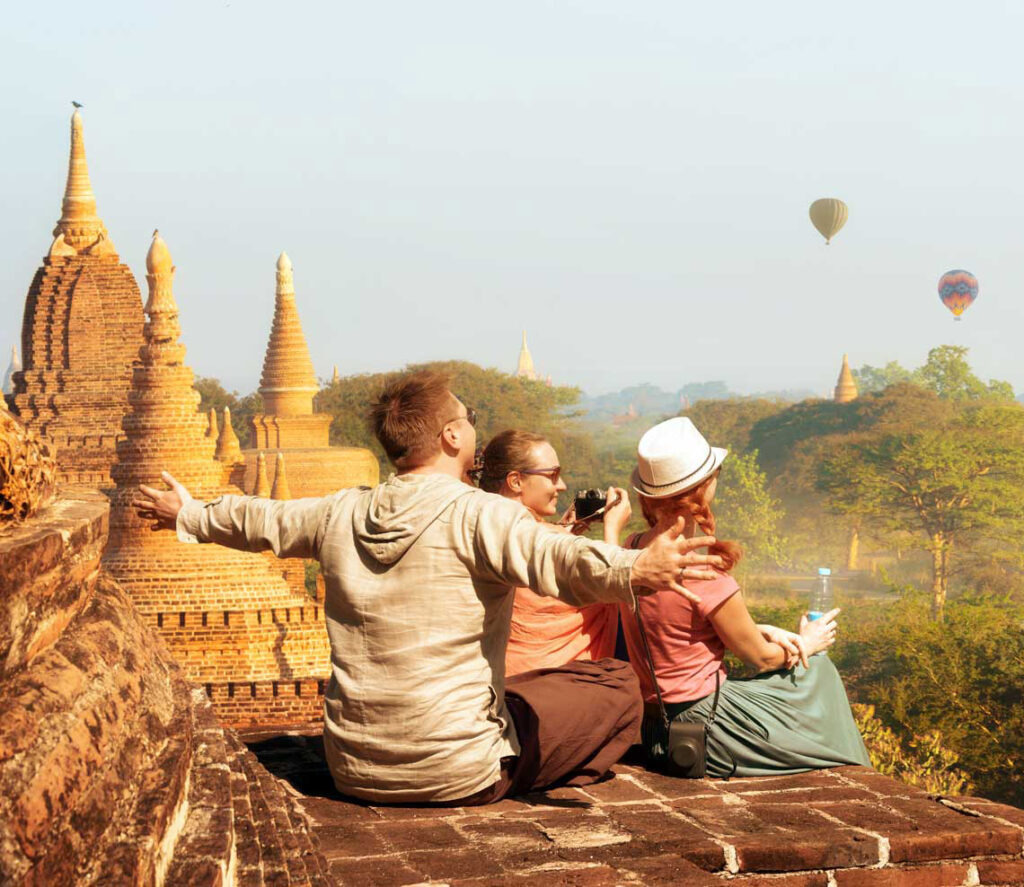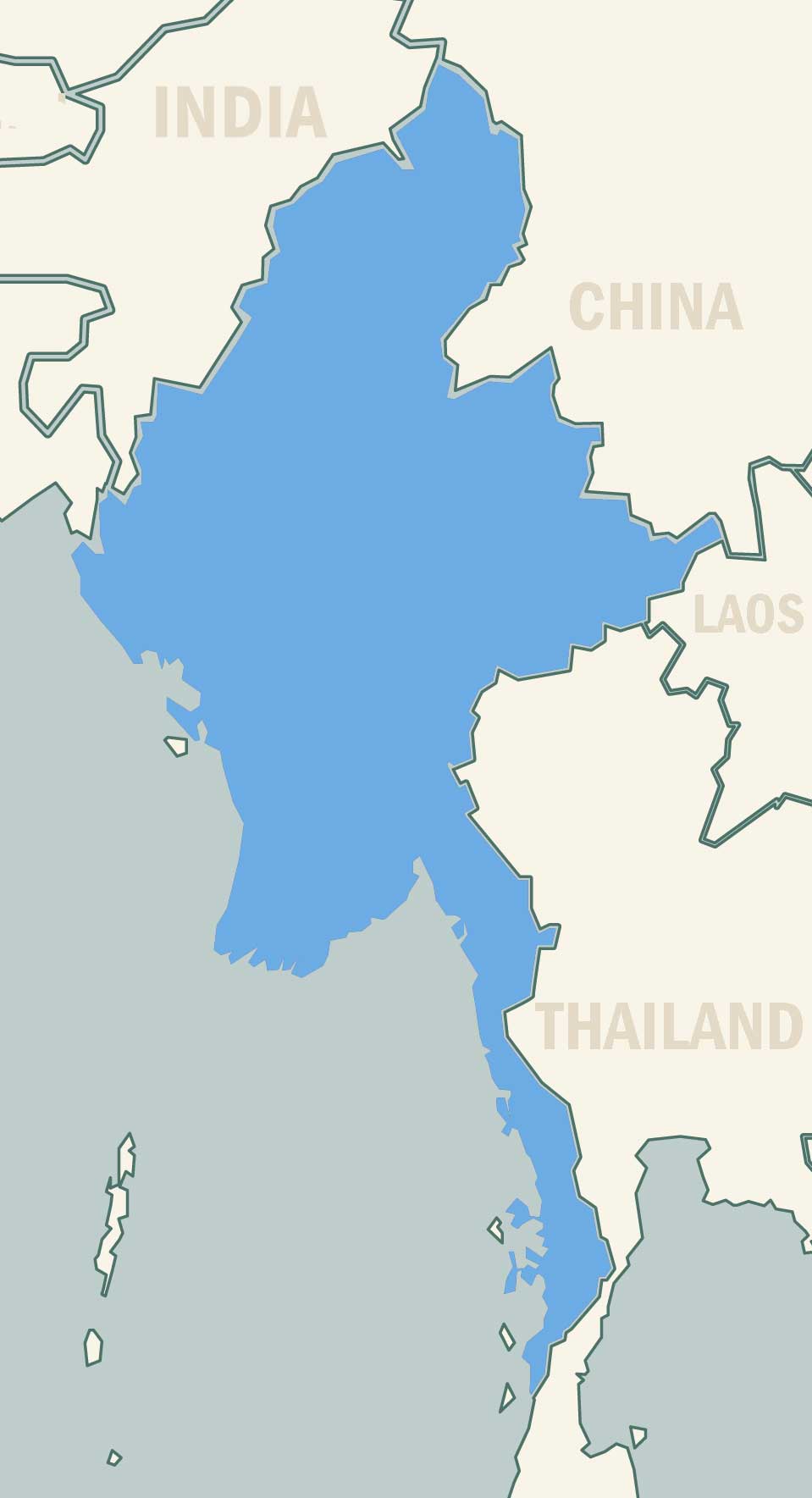Myanmar

Golden Land
Myanmar is recognized by many as the Golden Land for good reason. Burma, as it is still more commonly known in the west, is a country of magnificent, ancient Buddhist temples, broad flowing rivers, lush mountain forests, interesting cities and vastly contrasting countryside. It is a fascinating country and a real treat for travellers. It is not only a voyage into a different geographic region, but also into another time, another world. Everywhere a stranger travels, he or she will be welcomed with kindness, helpfulness and gentleness.

Flavours Of Myanmar
Take a bite out of Burma with some Green Tea Salad in Mandalay or a walking food tour in colonial Yangon. This mix of Chinese and Indian influences is a delicious way to experience Myanmar.

Unique Experiences
From the Shwedagon pagoda covered in billions worth of gold, to the desert plains covered with thousands of stupas, this country has unique experiences around every corner.

Local Encounters
Talk with the farmers and fishermen of Inle Lake, who created unique floating gardens. Feel the local culture when you buy some flowers to donate in a flower-offering ritual.

Top Highlights
- See the ‘the world’s biggest book’– 729 marble slabs on which are inscribed the Tripitaka, a Buddhist doctrine, in Mandalay.
- Stroll through the colorful old town of Yangon and discover the many buildings from the colonial era.
- Visit the exciting Railway Bazaar in Mandalay, where fresh fish, fruit and other goodies are literally sold on the rails.
- Take a hot air balloon ride over mystical Bagan at sunrise and discover this abandoned city with its countless pagodas
- Climb the 777 steps to Mount Popa and see the Buddhist monastery with gold-plated pagodas on a volcanic cone.
- Watch the Intha fishermen at Inle lake how they fish skillfully with one leg and swing the oar with the other
- Recharge your batteries and cool off in the calm sea at the 8km long sandy beach of Ngapali.

Myanmar Map and Infos
Capital
Nyapyidaw
Currency
Kyat
Language
Burmese
Population
54 Million
Religion
Buddhism
Time
GMT+6.30

The ethnic origins of modern Myanmar, known historically as Burma, are a mixture of Indo-Aryans, who began pushing into the area around 700 BC and the Mongolian invaders under Kublai Khan, who penetrated the region in the 13th century.
Anawrahta (1044–1077) was the first great unifier of Myanmar.
In 1612, the British East India Company sent agents to Burma, but the Burmese doggedly resisted efforts of British, Dutch, and Portuguese traders to establish posts along the Bay of Bengal. Through the Anglo-Burmese War in 1824–1826 and two subsequent wars, the British East India Company expanded to the whole of Burma. By 1886, Burma was annexed to India; it then became a separate colony in 1937.
During World War II, Burma was a key battleground; the 800-mile Burma Road was the Allies’ vital supply line to China. The Japanese invaded the country in Dec. 1941, and by May 1942, had occupied most of it, cutting off the Burma Road. After one of the most difficult campaigns of the war, Allied forces liberated most of Burma prior to the Japanese surrender in August 1945.
Burma became independent on Jan. 4, 1948. In 1962, left-wing general Ne Win staged a coup, banned political opposition, suspended the constitution, and introduced the “Burmese way of socialism.” After 25 years of economic hardship and repression, the Burmese people held massive demonstrations in 1987 and 1988. These were brutally quashed by the State Law and Order Council (SLORC). In 1989, the military government officially changed the name of the country to Myanmar.
In May 1990 elections, the opposition National League for Democracy (NLD) won by a landslide, but the military, or SLORC, refused to recognize the election results. The leader of the opposition, Aung San Suu Kyi, was awarded the Nobel Peace Prize in 1991. Although the ruling junta has maintained a tight grip on Myanmar since 1988, it has not been able to subdue an insurgency in the country’s south that has gone on for decades.
On November 13, 2005, the seat of government was removed from the capital Rangoon to a mountain compound called Pyinmanaa. More than 1,000 delegates gathered in December 2005 to begin drafting a constitution, which the junta said was a step toward democracy. The convention adjourned in late January 2006 with little progress. In 2007 a series of anti-government protests were held, resulting in numerous civilians being arrested, around 70 being killed and around 40 monks being severely beaten and killed in the process. On 7 February 2008, SPDC announced that a referendum for the Constitution would be held, and Elections by 2010.
The 2011–2012 Burmese democratic reforms are an ongoing series of political, economic and administrative reforms in Burma undertaken by the military-backed government. These reforms include the release of pro-democracy leader Aung San Suu Kyi from house arrest and subsequent dialogues with her, establishment of the National Human Rights Commission, general amnesties of more than 200 political prisoners, institution of new labor laws that allow labor unions and strikes, relaxation of press censorship, and regulations of currency practices. As a consequence of the reforms, ASEAN has approved Burma’s bid for the chairmanship in 2014. United States Secretary of State Hillary Clinton visited Burma on 1 December 2011, to encourage further progress; it was the first visit by a Secretary of State in more than fifty years. United States President Barack Obama visited one year later, becoming the first US president to visit the country.
Suu Kyi’s party, the National League for Democracy, participated in by-elections held on 1 April 2012 after the government abolished laws that led to the NLD’s boycott of the 2010 general election. She led the NLD in winning the by-elections in a landslide, winning 41 out of 44 of the contested seats, with Suu Kyi herself winning a seat representing Kawhmu Constituency in the lower house of the Burmese Parliament. However, uncertainties exist as some other political prisoners have not been released and clashes between Burmese troops and local insurgent groups continue.